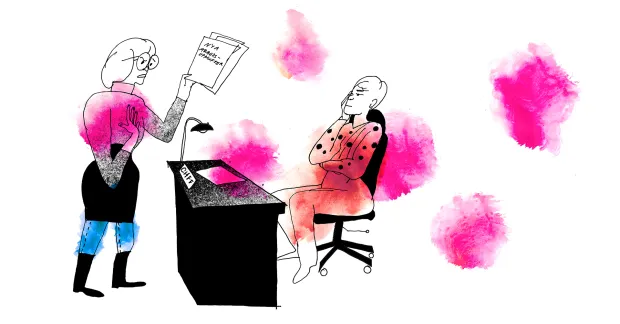
In August, an internal email was sent to Ericsson employees informing them of new guidelines. Instead of a 50 percent office presence, employees were now required to be in the office 60 percent of the time, or three days a week.
This was not met with enthusiasm, especially since the company had just reduced its office space by two buildings in Kista. According to Per Östberg, the Union's club chairman at Ericsson, the increased office presence requirement has caused some concerns.

– There are enough places for everyone to have a workspace. However, there are not enough private rooms where one can take meetings or phone calls, he says.
– It causes some stress among those who have global contacts and need to find a room as soon as they arrive at work.
Difficult to find a private room
One of those who often has trouble finding a room is developer Anna Sjöberg. On the days she goes to the office in Kista, she books her workspace via an app. However, phone rooms or meeting rooms cannot be booked.
– In the app, it looks like the office is full of people, but when you get there, everyone is in the meeting rooms, and the open landscape is empty. I always have to arrive at work early to find a room when I have meetings, it can be stressful, she says.
Anna Sjöberg works with international contacts and sites in other parts of the country. Where she physically sits doesn't really matter.
– When I am at the workplace, my colleagues are often in other meetings, so I don't really see the point of going in more often. Besides, I get more done when I'm at home. However, I can understand if they want to create an "Ericsson spirit" for new employees on site.
Ericsson: Hybrid work is determined through dialogue
According to Ericsson's press department, which responds via email, the employer believes that even though there is an "office first" policy, it is still up to each manager, team, and employee to determine how and where they work best.
– Ericsson's hybrid guideline has always provided the opportunity to come to an agreement through dialogue on how and where one works best and that everyone understands the importance and benefits of meeting, from both an individual and team perspective.
At the same time, more people are expected to come to the office, you have reduced your office space in the past year. How does that add up?
– Ericsson's office strategy is based on creating the right premises that provide the right conditions for the business to perform its work. Ericsson has many square meters of office space and is constantly working to develop our offices. We believe we have plenty of office space for those who want to work in the office.
Will you monitor that employees spend 60 percent of their working time in the office?
– The policy should be seen as a recommendation rather than a strict requirement where we want our employees to understand the importance of meetings between people. Ericsson trusts its employees.
Hybrid work as an effect of the coronavirus pandemic
The view on hybrid work has changed after the coronavirus pandemic. Being able to work flexibly has become a benefit that employers can offer. To get employees to want to return to the office, the employer must be able to offer something more than a seat and a desk, believes Union's club chairman Per Östberg.
– Ericsson tried to save money by removing coffee machines on some floors. That's not how you get people to come back to the office, for example. But they had to backtrack on that, there were protests, he says.
For developer Anna Sjöberg, the community with colleagues is what would make her come to the office more.
– If the employer organized activities that created a sense of community among colleagues, it would feel meaningful to go to the office.
This text has been translated with the help of AI.








